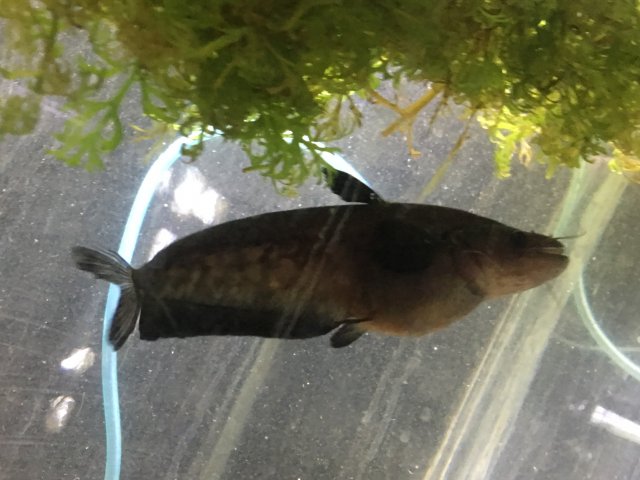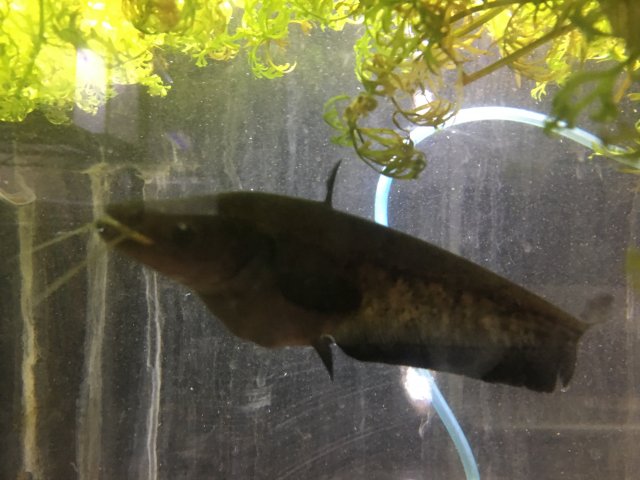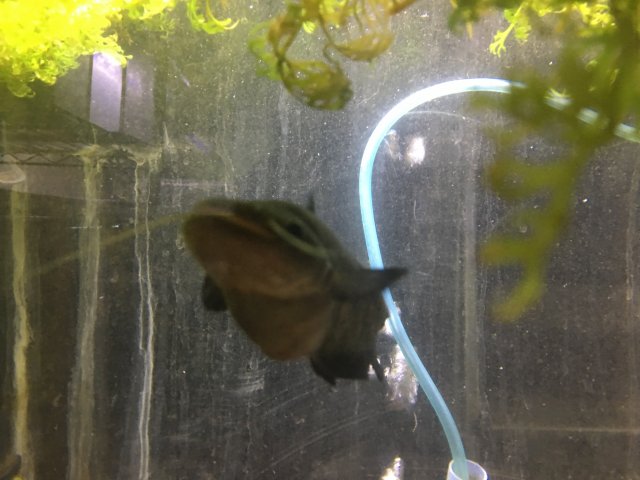Silurus glanis Question
- Thread starter GiantFishKeeper101
- Start date
-
- Tags
- silurus glanis
You are using an out of date browser. It may not display this or other websites correctly.
You should upgrade or use an alternative browser.
You should upgrade or use an alternative browser.
wednesday13 yeah, mine already slow down his growth. Now it takes more than a few days to get 1" of growth. If the fish being kept in a natural pond, i suspect they could live more than 25 years & perhaps grows even bigger
I dont think it makes much difference honestly... pond or tank. Just wanted to mention ur lookin at 25+yrs to grow one to 6-8' to deafen the nay sayers saying u need a pond or lake immediatly. thats just not the case... They dont need much room in my opinion. Very agile to turn around... and very slender bodied for a catfish...head, stomach, tail...
I was picking up some live food at my lfs, and they had 2 x 3" Well for sale. They are wild type, one much darker than the other, and were priced at $29.99. This is the first time I've ever seen for sale, so I bought one (of course). I am surprised that they are even legal in California, but I checked the Fish and Game list and they are not on it. Talk about an introduced species from hell... I'll post some picks when it settles into its new tank.
Based on the Federal ban and the price, I bet it is an Ompok species.
He’s difficult to photograph; he’s been lurking under a bunch of water sprite and bolts when I try to put light on him to photograph.
What I’m wondering is what to do with him once he’s too big for the 150g I’m gonna put him in?..
It sucks they sell these fish, not to mention arapimas, etc at the lfs, not to mention they could easily naturalize, if not already.
You won't have to concern yourself with the tank size. 150 gal is good for Ompok.
Wed13 is also right in saying that buying a potentially dangerous fish you are contradicting your own cause because you are encouraging the sales of this exact species. Moving merchandise is the cornerstone of success of any vendor.
Wels species you can tell by their number of barbels. European wels have 6, other species have 4. To keep it simple, as long as there're buyers, they will keep coming.
Perhaps I am ignorant, but wels is one and only species. You probably meant Silurus species can be distinguished like that. Silurus is the genus. Sorry. A pedantic note but people all over the world read our forum posts. We have the name to uphold.
All catfish go through spurts of growth and periods where they don't.... studies were done in France that concluded wild Silurus Glanis reached an average of only 36" over 5 yrs and they only consumed 1-1.5lbs of food per week. No evidence was found against them harming native populations in their non native waters either. My own work yielded at 52" Silurus Glanis after almost 7 yrs. Id estimate around 35-40lbs. These fish are in no way monsters or man eaters. they are very personable and make great companions... pics shown by fishermen of the 6'+ are 25yr old or more fish... anyone keeping one at home will most likely never see that. 2 many things happen out of our control with power/equipment failures.
In our tanks kept warm year round the 3' mark is reached roughy 2x faster. Just a humble addition.
Well I really don’t care if it is an authentic wels; it’s a silurus for sure; I had a Chinese species for a while which died during a tank transfer due to being extreme skittish (knocked itself out - sad).
Where are the 6 barbels? Guess I’ll look it up.
Here are pics - tell me wat you think. It’s eating turtle pellets, mealworms and feeders, and is growing disturbingly fast.
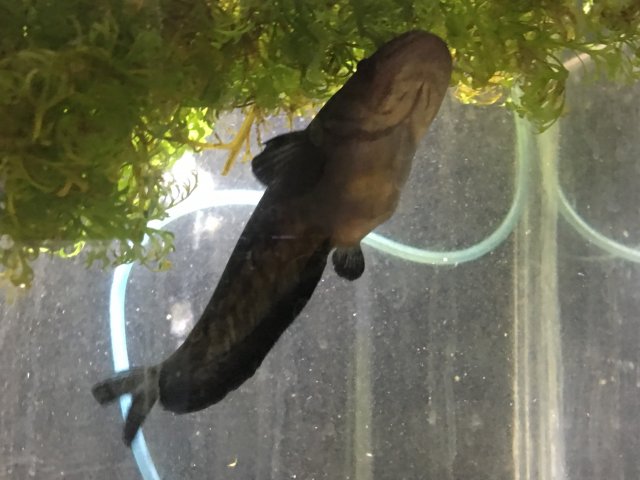
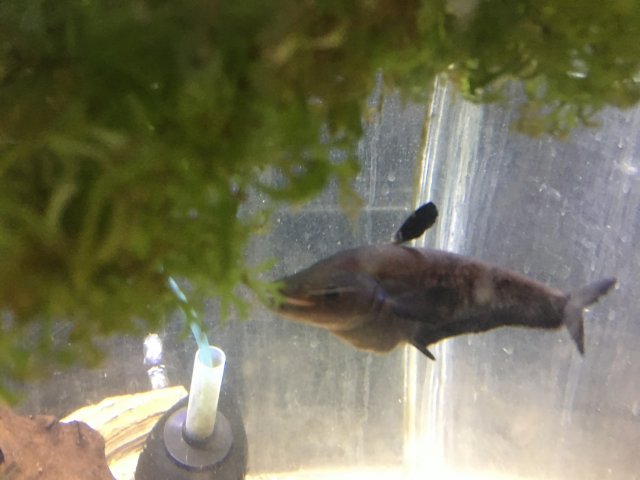

Where are the 6 barbels? Guess I’ll look it up.
Here are pics - tell me wat you think. It’s eating turtle pellets, mealworms and feeders, and is growing disturbingly fast.



I counted the barbels and there are only 4.
So what kind of silurus is this? I really don’t care if it’s not a wels; I like big predatory catfish and am glad I got this one. Any thoughts as to what I have?
I think thebiggerthebetter is right about it being an ompok. The Asian one (labeled as “Chinese gulper catfish”) apparently was one too.
So what kind of silurus is this? I really don’t care if it’s not a wels; I like big predatory catfish and am glad I got this one. Any thoughts as to what I have?
I think thebiggerthebetter is right about it being an ompok. The Asian one (labeled as “Chinese gulper catfish”) apparently was one too.
Lol, that's a Wallagonia leerii. It is indeed in Siluridae family but not in silurus genus. The forked tail give it away. Apart from Ompok sp, Wallagonia sp have longer mouth. Seeing it that small & plentiful, probably farm bred in Thailand. They're available year round.
+1Lol, that's a Wallagonia leerii. It is indeed in Siluridae family but not in silurus genus. The forked tail give it away. Apart from Ompok sp, Wallagonia sp have longer mouth. Seeing it that small & plentiful, probably farm bred in Thailand. They're available year round.
From what I can tell both ompok and Wallagonia have forked causal fins. This one as clearly been raised in captivity since it takes pellets. I’m still hoping it’s an ompok.


